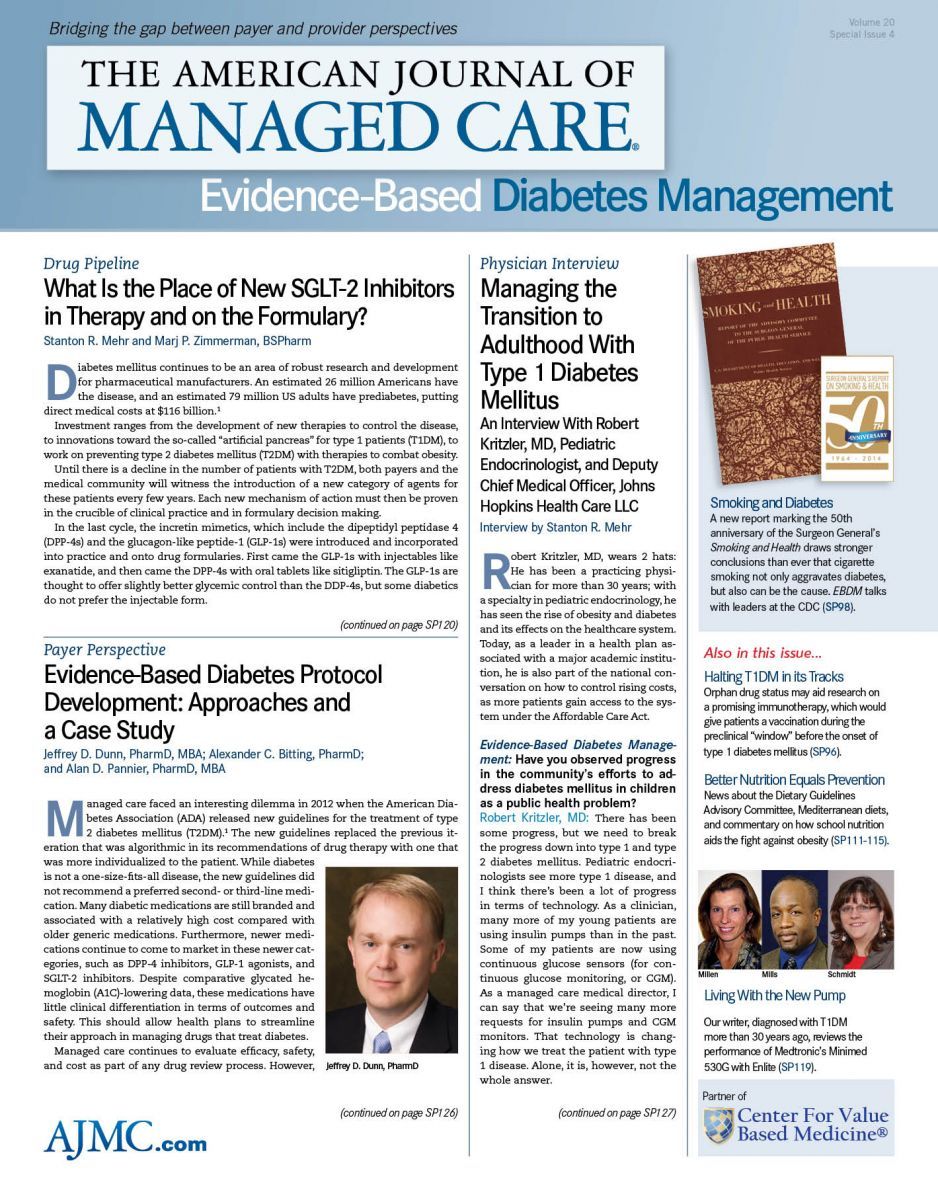- Center on Health Equity & Access
- Clinical
- Health Care Cost
- Health Care Delivery
- Insurance
- Policy
- Technology
- Value-Based Care
A Big Step Forward in Treating Chronic Diabetic Foot Ulcers
Diabetic patients, especially those with very high hyperglycemia, are at an increased risk of developing foot sores or ulcers.1 The ulcers are often painless, which may be due to neuropathy or nerve damage, and can lessen the person’s ability to feel pain, heat, and cold.2 Subsequently, the ulcers may be neglected, resulting in infection and aggravation of the wound.
A study recently published in The Journal of Clinical Endocrinology and Metabolism by a group in Italy conducted a randomized, double-blind, placebocontrolled trial, wherein diabetic patients
with hard-to-heal ulcers were randomized to receive placebo or polydeoxyribonucleotide (PDRN). The patients were treated with either the drug or the placebo 3 days a week for 8 weeks, intramuscularly and perilesionaly. The primary outcome of the trial was set at complete ulcer healing and the secondary outcomes were days needed for wound closure and reepithelialization of the wound surface. While 18.9% of patients on the placebo presented complete healing, 37.3% of PDRN-treated patients showed complete healing. Additionally, PDRN hastened the process of wound closure, with a median healing time of 30 days in PDRN-treated subjects versus 49 days in those treated with placebo.3
Foot ulcers, a common diabetic complication, can result in hospitalization and in extreme cases, lower limb amputation. Nearly 70,000 diabetic patients underwent a leg or foot amputation in 2008, and these procedures account for >60% of nontrauma related amputations according to the Centers for Disease Control and Prevention (CDC). The CDC data also identified an 8-fold increased risk of leg or foot amputation in diabetics.4
Primary Causes of Limb Loss in Diabetics
• Reduced blood flow, especially in the extremities, which decreases healing potential
• Neuropathy reduces pain, which can result in the patient neglecting the pain
• Neuropathy is aggravated in individuals who
º Have very high blood sugar levels
º Have high cholesterol
º Have high blood pressure
º Are overweight4
Diabetic Foot Ulcers and Healthcare Costs
Costs associated with diabetic foot care (including amputations) have been identified as the single largest category of excess medical costs for diabetes, and are estimated at $11 billion for patients with neuropathy.5
A collaborative report presented at the 2013 annual meeting of the International Society for Pharmacoeconomics and Outcomes Research, by the Analysis Group, Inc, and Organogenesis Inc, assessed the annual burden of diabetic foot ulcers (DFU) on payers at $10-$15 billion, over and above work-loss and other indirect costs. This calculation was based on an estimation that 0.9 million patients suffer from DFU each year.6 The report also estimated that private insurance companies bore twice the cost for DFU patients overall ($30,309 annually per patient) compared with matched non-DFU diabetic controls ($14,022). A similar trend was observed with Medicare ($27,040 annual cost per DFU patient compared with $15,743 for matched control). The authors emphasized the need for preventive measures to avoid the severity and cost of end-points like amputations among these patients.6
The following table provides a strategy that could help avoid DFU as well as successfully manage DFU to avoid limb loss.5
Current and Novel Treatment Options for Diabetic Foot Ulcers
Currently, the standard options for treatment of DFU include debridement of the wound, managing any associated infections, revascularization of the wound as needed, and off-loading of the ulcer.7 Debridement, achieved surgically, enzymatically, biologically and through autolysis, removes surface debris and necrotic tissue. Off-loading helps heal the ulcers and also prevents recurrence.7
Growth factors such as platelet-derived growth factor-beta (PDGF-beta) are commonly used as a topical therapy for treating DFUs. Other options that have been evaluated include application of platelet-rich plasma, granulocyte colony-stimulating factor (G-CSF), other growth factors such as basic fibroblast growth factor (bFGF), and epidermal growth factor (EGF) locally to the wound. Matrix metalloproteinase modulators, bioengineered skin substitutes, and hyperbaric oxygen treatment are some of the newer and upcoming treatment options for DFU.7
According to Francesco Squadrito, MD, the lead author on the PDRN study, preventing ulcers can prevent up to 85% amputations.8 So an effective treatment like PDRN could prove a tremendous
EBDM
advantage in DFU patients. The study researchers are planning a phase 4 study of PDRN and the manufacturer of the drug (Placentex) has filed for a patent.8
References
1. MedLine Plus website. Diabetes foot ulcers. http://www.nlm.nih.gov/medlineplus/ency/patientinstructions/000077.htm. Accessed March 6, 2014.
2. American Diabetes Association website. Foot complications. http://www.diabetes.org/livingwith-diabetes/complications/foot-complications/. Accessed March 6, 2014.
3. Squadrito F, Bitto A, Altavilla D, et al. The effect of PDRN, an adenosine receptor A2A agonist, on the healing of chronic diabetic foot ulcers: Results of a clinical trial. J Clin Endocrinol Metab. 2014;Jan 31([Epub ahead of print]).
4. CDC website. Living With Diabetes: Keep Your Feet Healthy. http://www.cdc.gov/Features/DiabetesFootHealth/. Accessed March 6, 2014.
5. Barshes NR, Sigireddi M, Wrobel JS, et al. The system of care for the diabetic foot: objectives, outcomes, and opportunities. Diabetes Foot Ankle. 2013,4:21847 http://dx.doi.org/10.3402/
dfa.v4i0.21847.
6. Rice B, Desai U, Cummings AK, Skornicki M, Parsons N, and Birnbaum H. Medical, Drug, and Work-Loss Costs of Diabetic Foot Ulcers. ISPOR 18th Annual International Meeting. http:// www.ispor.org/regional_chapters/Mexico/documents/SB2%20Presentation.pdf. Accessed March 6, 2014.
7. Alexiadou K and Doupis J. Management of diabetic foot ulcers. Diabetes Ther. 2013,3(1):4-19.
8. McCall B. Medscape website. New Drug a Possible Breakthrough for Diabetic Foot Ulcers? Accessed March 7, 2014.

Exploring Pharmaceutical Innovations, Trust, and Access With CVS Health's CMO
July 11th 2024On this episode of Managed Care Cast, we're talking with the chief medical officer of CVS Health about recent pharmaceutical innovations, patient-provider relationships, and strategies to reduce drug costs.
Listen
Integrated Care for Chronic Conditions: A Randomized Care Management Trial
December 3rd 2025The authors sought to understand the differential impact of payer-led community-based care management approaches on stakeholder-oriented outcomes for publicly insured adults with multiple chronic conditions.
Read More

